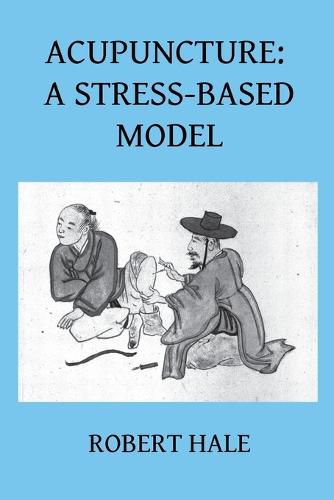Readings Newsletter
Become a Readings Member to make your shopping experience even easier.
Sign in or sign up for free!
You’re not far away from qualifying for FREE standard shipping within Australia
You’ve qualified for FREE standard shipping within Australia
The cart is loading…






This title is printed to order. This book may have been self-published. If so, we cannot guarantee the quality of the content. In the main most books will have gone through the editing process however some may not. We therefore suggest that you be aware of this before ordering this book. If in doubt check either the author or publisher’s details as we are unable to accept any returns unless they are faulty. Please contact us if you have any questions.
Acupuncture practice is overburdened by superfluous and questionable traditional theory. This book offers a simpler but, the author believes, equally effective model for the practice of acupuncture. It bases this model on the concept of stress, rather than traditional theories such as qi and the five elements. A method of treatment is proposed which does not rely on traditional maps of meridians or the traditionally described functions of discrete acupuncture points.
This revised third edition of Acupuncture: A Stress-Based Model contains a number of corrections and additions. On the one hand I had discovered a small number of inaccuracies in the first addition and on the other I have changed my mind about certain things. The additions concern relevant information from research, either new research or research about which I had hitherto been unaware. In particular I have added a new chapter on acupuncture point specificity, by which I mean the capacity for an acupuncture point to produce a range of distant or systemic effects that is distinct from those produced by other acupuncture points. I have also decided to leave out the entire first chapter of previous editions (about stress), on the basis that the subject matter is likely already to be familiar to most readers. The previous editions tried to be about both treating stress and presenting a paradigm in which acupuncture treatment in general is seen in terms of a stress response. Given the latter, the former now seems to me to be redundant. The other change in this edition is that I have sequenced and presented the material a little differently.
The general thrust of the book is unchanged. My contention is that acupuncture practice is overburdened by superfluous and questionable traditional theory. This book offers a simpler but, I believe, equally effective model for the practice of acupuncture. It bases this model on the concept of stress, rather than traditional theories such as qi and the five elements. An approach to treatment is proposed which does not rely on traditional maps of meridians or the traditionally described functions of acupuncture points.
$9.00 standard shipping within Australia
FREE standard shipping within Australia for orders over $100.00
Express & International shipping calculated at checkout
Stock availability can be subject to change without notice. We recommend calling the shop or contacting our online team to check availability of low stock items. Please see our Shopping Online page for more details.
This title is printed to order. This book may have been self-published. If so, we cannot guarantee the quality of the content. In the main most books will have gone through the editing process however some may not. We therefore suggest that you be aware of this before ordering this book. If in doubt check either the author or publisher’s details as we are unable to accept any returns unless they are faulty. Please contact us if you have any questions.
Acupuncture practice is overburdened by superfluous and questionable traditional theory. This book offers a simpler but, the author believes, equally effective model for the practice of acupuncture. It bases this model on the concept of stress, rather than traditional theories such as qi and the five elements. A method of treatment is proposed which does not rely on traditional maps of meridians or the traditionally described functions of discrete acupuncture points.
This revised third edition of Acupuncture: A Stress-Based Model contains a number of corrections and additions. On the one hand I had discovered a small number of inaccuracies in the first addition and on the other I have changed my mind about certain things. The additions concern relevant information from research, either new research or research about which I had hitherto been unaware. In particular I have added a new chapter on acupuncture point specificity, by which I mean the capacity for an acupuncture point to produce a range of distant or systemic effects that is distinct from those produced by other acupuncture points. I have also decided to leave out the entire first chapter of previous editions (about stress), on the basis that the subject matter is likely already to be familiar to most readers. The previous editions tried to be about both treating stress and presenting a paradigm in which acupuncture treatment in general is seen in terms of a stress response. Given the latter, the former now seems to me to be redundant. The other change in this edition is that I have sequenced and presented the material a little differently.
The general thrust of the book is unchanged. My contention is that acupuncture practice is overburdened by superfluous and questionable traditional theory. This book offers a simpler but, I believe, equally effective model for the practice of acupuncture. It bases this model on the concept of stress, rather than traditional theories such as qi and the five elements. An approach to treatment is proposed which does not rely on traditional maps of meridians or the traditionally described functions of acupuncture points.